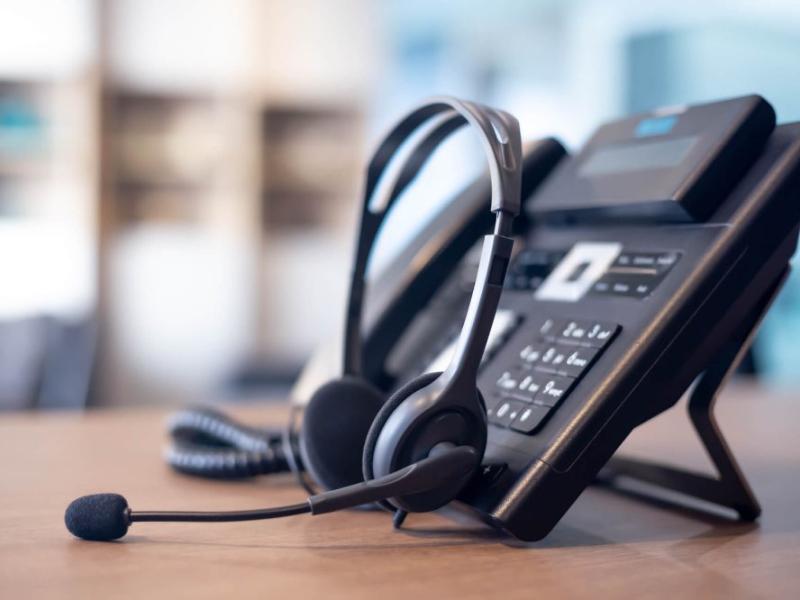VoIP (Voice over Internet Protocol) and traditional phone services are different voice communication options. The transmission medium is the primary distinction. VoIP turns voice signals into digital data and sends them over the internet. Traditional phone services use the Public Switched Telephone Network (PSTN), which uses copper lines or fibre-optic cables. VoIP gives you more freedom, lower costs, and extra features like video conferencing, file sharing, and the ability to connect to other online services. But traditional phone services are usually more stable, have better voice quality, and are more reliable in an emergency. In a nutshell, VoIP is a modern way to communicate, while traditional phone services focus on being stable and reliable.
What is VOIP?
Voice over Internet Protocol, or VoIP, is a technology that lets people talk and do other things like video calls and conferences over the internet instead of using traditional phone networks. VoIP allows people to make phone calls over the internet instead of using a traditional phone line. It does this by turning analogue voice signals into digital data packets.
One of the best things about VoIP is that it can save you money because it often has lower call rates than traditional phone services, especially for long-distance and international calls. VoIP also gives users more freedom because they can use the service on different devices, like smartphones, computers, and IP phones, as long as they are connected to the internet.
VoIP also lets you use features like video conferencing, file sharing, and integration with other online services like Customer Relationship Management (CRM) tools and email platforms that are not usually available with traditional phone systems. VoIP is often used by businesses that want to improve their communication infrastructure because of these features.
Even though VoIP has a lot of good points, network problems like latency, jitter, and packet loss can affect the quality of calls. Also, VoIP services can go down if the internet goes down, and they might not be as reliable for emergency calls as regular phone services. Still, VoIP is becoming more and more popular due to its low cost, flexibility, and advanced features.
What are Phone Services?
Phone services are voice communication systems that use the Public Switched Telephone Network (PSTN). The PSTN is a group of interconnected networks, such as copper wires, fibre-optic cables, and cellular networks, allowing people in different places to make voice calls. They are also called traditional telephone services or landline services.
Traditional phone services send analogue voice signals over a dedicated phone line, connecting the person making the call to the person receiving the call. This system has been the main way to talk on the phone for over a century. It has changed over the years to include features like caller ID, call waiting, and voicemail.
Even though phone services are known for being stable and reliable, their call rates are often higher than newer options like Voice over Internet Protocol (VoIP), especially for long-distance and international calls. Also, traditional phone systems usually don’t have advanced features like video conferencing and integration with online services, but VoIP solutions do.
Even with these problems, phone services still have benefits, such as better voice quality, less chance of network problems, and more reliable handling of emergency calls. So, phone services are still useful, especially for people who value reliability and consistent call quality over advanced features and saving money.
Difference Between VOIP and Phone Services
There are significant differences between VoIP (Voice over Internet Protocol) and traditional phone service, including transmission medium, cost, features, and reliability.
Transmission Medium
Traditional phone services use the Public Switched Telephone Network (PSTN), which depends on copper lines, fibre-optic cables, and cellular networks. On the other hand, Voice over Internet Protocol (VoIP) technology turns voice signals into digital data packets and transmits them over the internet. Because of this underlying distinction, the two systems offer contrasting rates, capabilities, and call quality.
Cost Structure
Compared to traditional phone services, VoIP often has cheaper call rates, especially for long-distance and international calls. To achieve these reductions, traditional telephone infrastructure is avoided, which is good news for home and corporate users.
Features
Video conferencing, file-sharing, and interaction with other web services like customer relationship management (CRM) and email platforms are just a few of the sophisticated features made possible by VoIP that aren’t available with traditional phone systems. For these reasons, VoIP has become increasingly popular among companies looking to upgrade their internal communications.
Reliability and Call Quality
The well-known advantages are reliability, superior sound quality, and reduced susceptibility to traditional phone services network problems. In contrast, VoIP can suffer from call quality issues due to network issues, including latency, jitter, and packet loss. In addition, traditional phone services are preferred over VoIP because of the greater reliability of their emergency call handling.
The primary distinctions between VoIP and traditional phone service are their respective transmission channels, pricing models, sets of included features, and dependability. Yet, traditional phone services concentrate on consistent call quality and reliability, catering to those that place a premium on steadfastness in their voice communication systems, while VoIP offers cost savings and innovative features, making it attractive to enterprises and modern customers.






